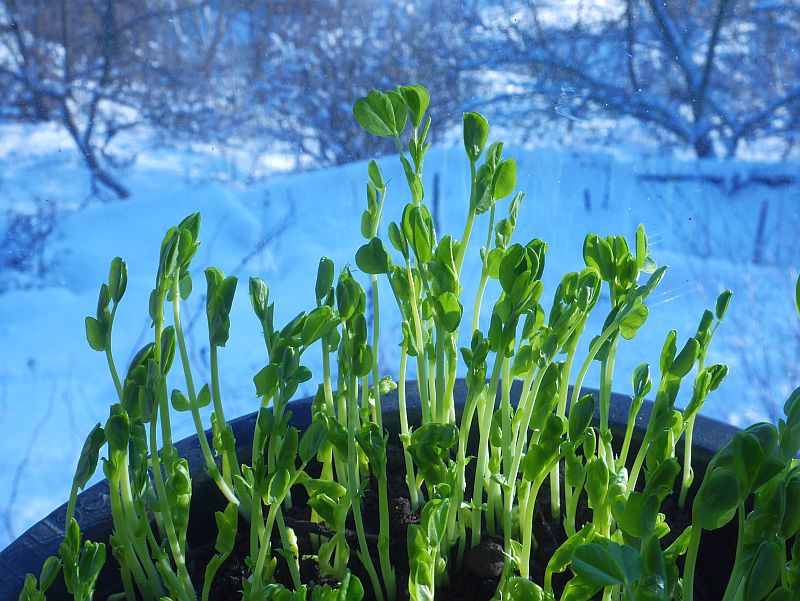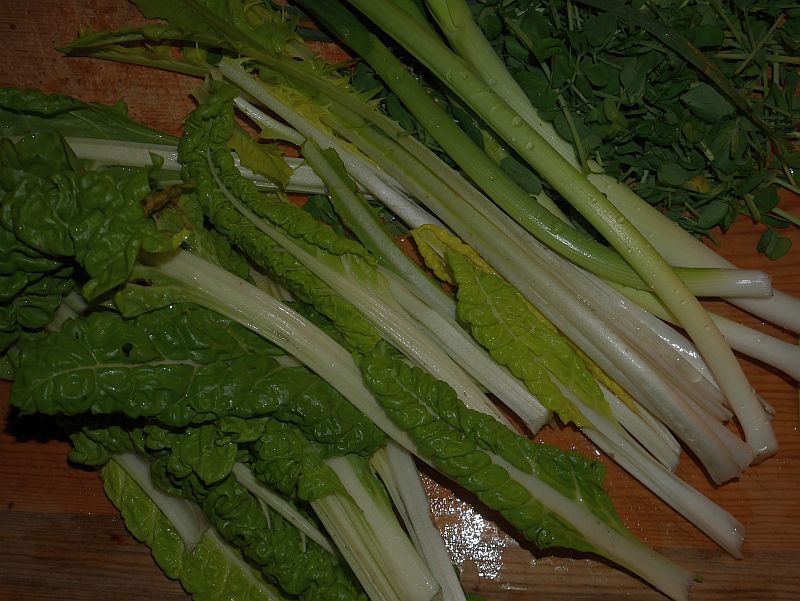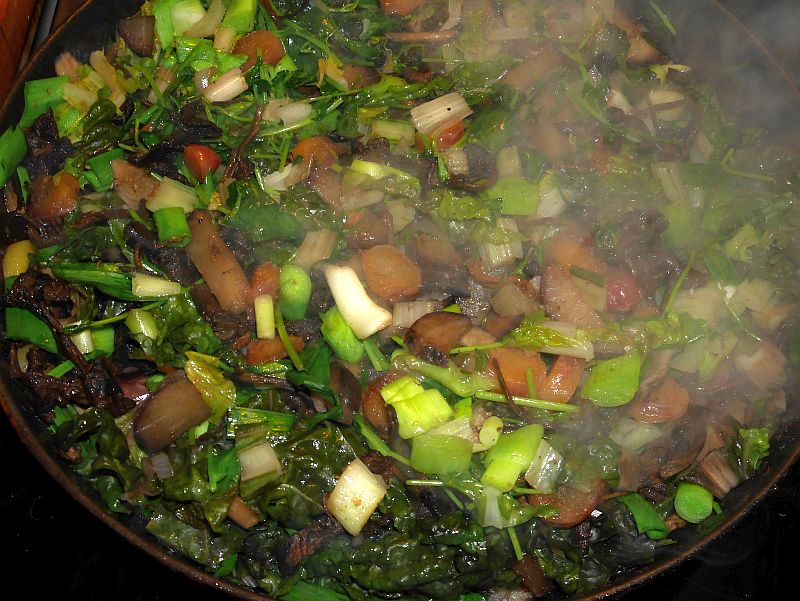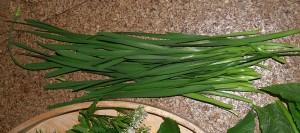We occasionally eat wild fish and bacalhau is a favourite made from Norwegian dried cod that can be found in supermarkets here. More or less anything goes in bacalhau (bacalao) and although most people make it in the same way – layers of potato, fish, tomato and onions, often with chili – the Portuguese have hundreds of ways of preparing baccalao (dried cod). Being self-sufficient, detailed recipes aren¨’t useful and we use whatever is available at the moment. Winter is the time for stored bulbs, corms, tubers, rhizomes, and taproots. See below the picture for yesterday’s baccalao ingredients with 14 home grown below surface storage organs plus some greens (I’m pretty sure nobody else had this version of the dish…ever!):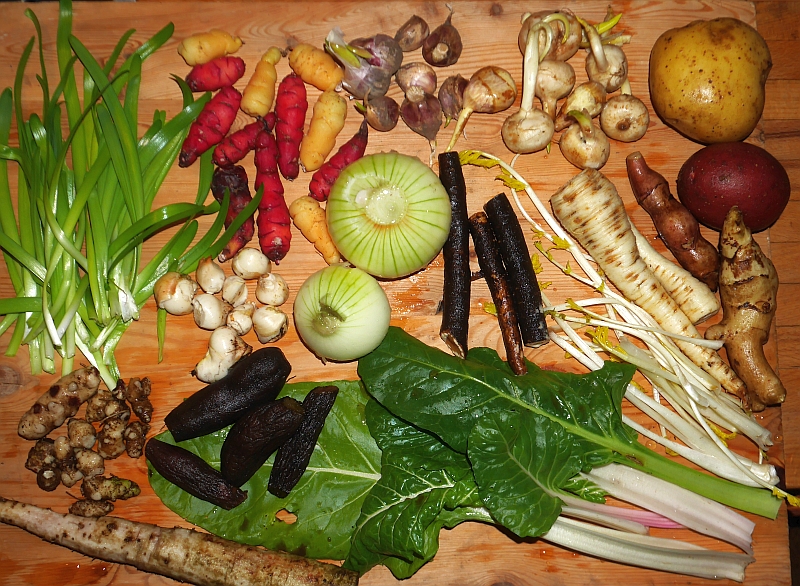
Oca (Oxalis tuberosa): yellow and red varieties
Garlic / hvitløk (Allium sativum)
Wapato (Sagittaria latifolia)
Potato / potet (Solanum tuberosum) – 2 varieties
Jerusalem artichokes / jordskokk (Helianthus tuberosus)
Parsnip / pastinakk (Pastinaca sativa)
Scorzonera / scorsonerrot (Scorzonera hispanica)
Common onion / kepaløk (Allium cepa)
Cacomitl (Tigridia pavonia)
Yacon (Polymnia sonchifolia)
Burdock / storborre (Arctium lappa)
Madeira vine (Anredera cordifolia)
Parsnip / pastinakk (Pastinaca sativa) shoots – had started shooting in the cellar
Leaf beets / bladbete (Beta vulgaris var. flavescens) – 3 varieties
Allium nutans (forced in the living room)
plus (not home grown) organic tomatoes, olive oil and olives
(I forgot the dandelion…will add tonight: we make enough that it lasts for several days….and the taste improves!)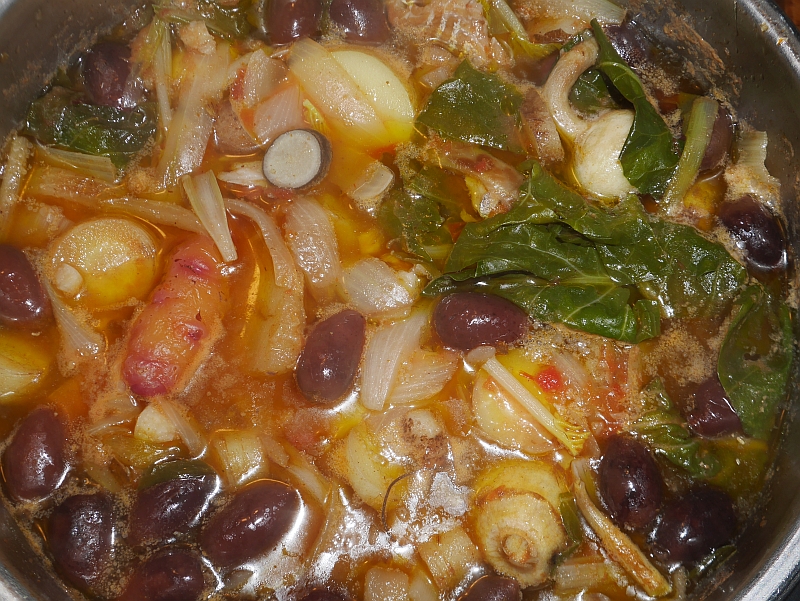
Tag Archives: Scorzonera
Xmas diversity from the rhizosphere
Presenting this year’s 30 rhizosphantastic Xmas vegetables, all roasted in the oven, served as every year in the last 40 with nut roast, bedecked with the following seeds / bulbils: alpine bistort / harerug (Polygonum viviparum), Himalayan balsam / kjempefringfrø (Impatiens glandulifera), evening primrose / nattlys (Oenothera biennis) and opium poppy (Papaver somniferum). The tubers are listed below the pictures.


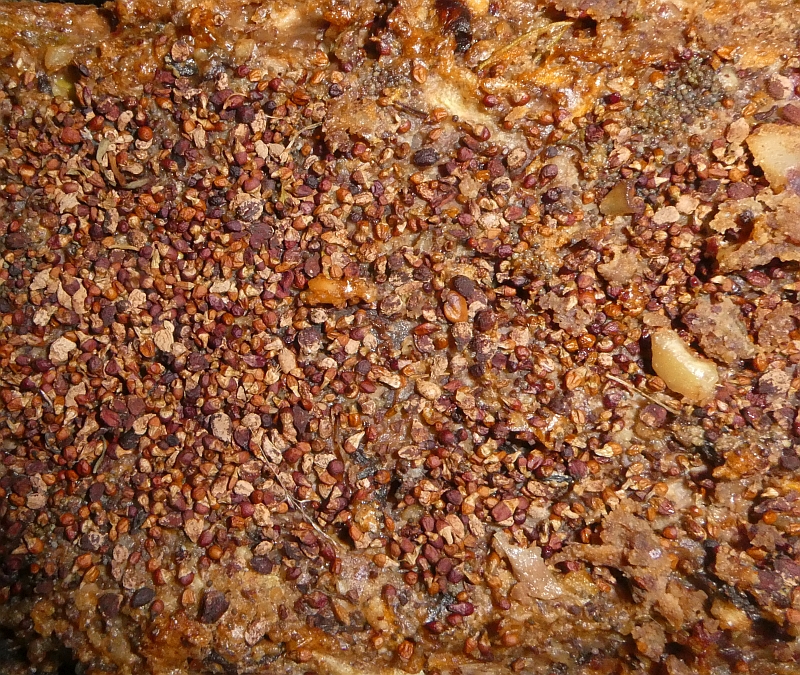
The 30 tubers, roots and rhizomes in the picture are:
Solanum tuberosum (potato / potet: 11 varieties)
Daucus carota (carrot / gulrot)
Oxalis tuberosa (oca: 2 varieties)
Arctium lappa (burdock)
Scorzonera hispanica (Scorzonera / scorsonnerot eller svartrot)
Tigridia pavonia (cacomitl)
Pastinaca sativa (parsnip / pastinakk)
Beta vulgaris (beetroot / rødbete)
Tropaeolum tuberosum (mashua)
Anredera cordifolia (Madeira vine)
Helianthus tuberosus (Jerusalem artichoke / jordskokk : 3 varieties)
Brassica rapa (turnip / nepe)
Brassica napus (swede / kålrot)
Dahlia (Dahlia / georginer)
Polymnia sonchifolia (yacon)
Sagittaria latifolia (wapato)
Allium cepa (onion)
Winter stir-fry
People are always asking me for recipes. I rarely follow recipes as my ingredients vary so much and I just use what I have available. However, I do follow a number of basic, mostly lacto-vegetarian recipes which I’ve evolved to my liking over the years. For instance, last night I used
a) Pea shoots (erteskudd), harvested about 25cm high (before they get too coarse to use; I don’t cut them right down to the soil as they will then resprout once or twice before giving up; to do this, they must be grown in a bucket or similar in deep soil); the peas were a mixture of about twenty home grown varieties, including several heirlooms such as Norwegian Jærert and Ringeriksert).
b) Swiss chard / mangold (it’s been too cold for this to regrow in the cellar where it’s planted in soil)
c) Chicory “Catalogna gigante di Chioggia” (sikkori) (this had resprouted in the cellar from the roots)
d) Leeks / purre (also stored in soil in the cellar)
e) Yacon (sliced tubers)
f) Scorzonera / scorsonnerot (sliced tubers)
g) Oca (oka) (Oxalis tuberosa)
h) Garlic / hvitløk
i) Chili / chili
j) Bulb onions / kepaløk
k) golpar (ground seed of various Heracleum species; bjørnekjeks / Tromsøpalme)
The roots are stir-fried first (in olive oil), then the onions are added and at the end the greens for 5-10 minutes, finally mixing in chili, salt and pepper. Served either over whole grain spelt pasta or mixed as a risotto (I use barley normally for a barlotto) with strong cheese or parmesan.
The roots are stir-fried first (in olive oil), then the onions are added and at the end the greens for 5-10 minutes, finally mixing in chili, salt and pepper. Served either over whole grain spelt pasta or mixed as a risotto with strong cheese or parmesan.
Day 1 of Naturplanteskolen’s Malvik visit
Solstice sweet and sour soup greens
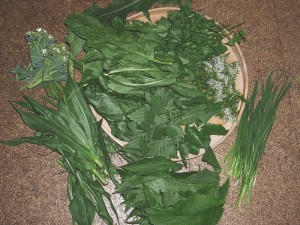
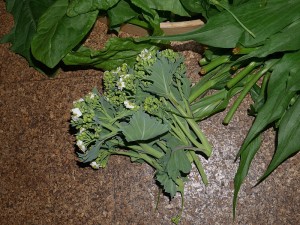
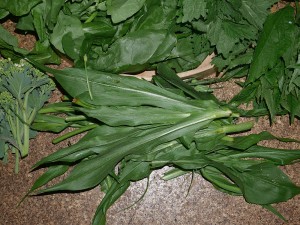
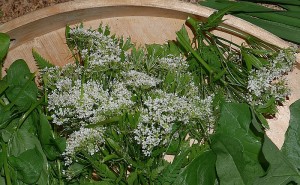
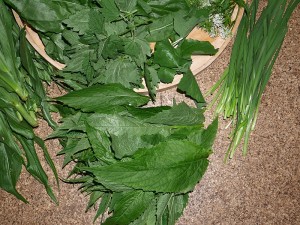
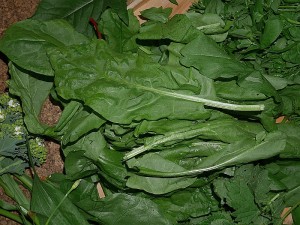
Somebody once said that solstice greens are the best…I’d add that solstice perennial greens are even better :) Here’s what I used in tonight’s soup: Sea kale(strandkål), Scorzonera (scorsonnerot), Allium senescens, Sweet cicely (spansk kjørvel), Giant bellflower (storklokke), Sorrel / surblad, Nettle (nesle), Dandelion (løvetann) (all are in my book)…and I almost forgot that there’s chickweed (vassarve) in there too, perennial in that it’s there every year!

